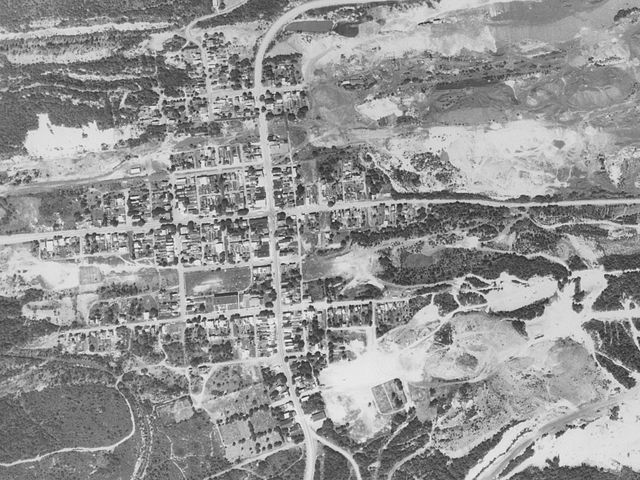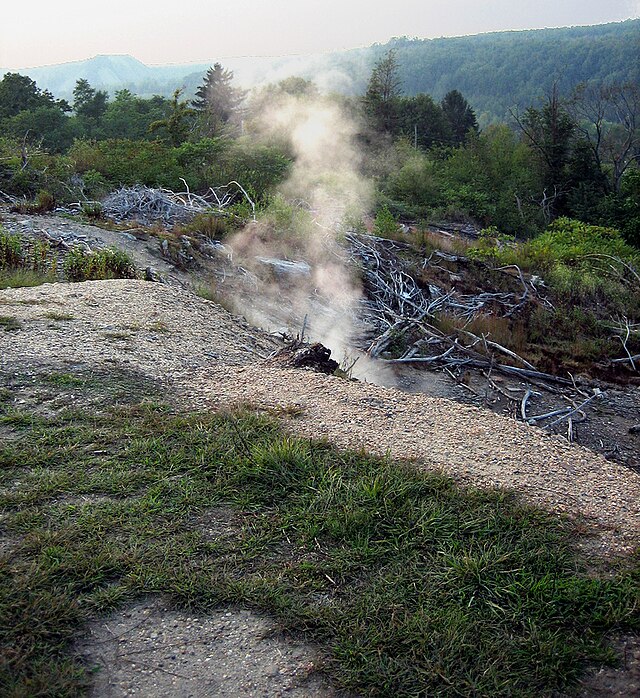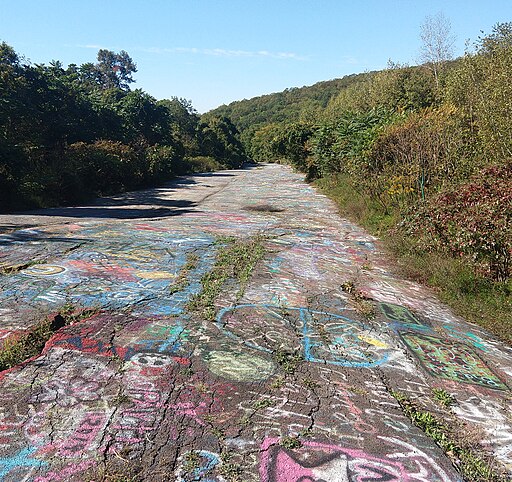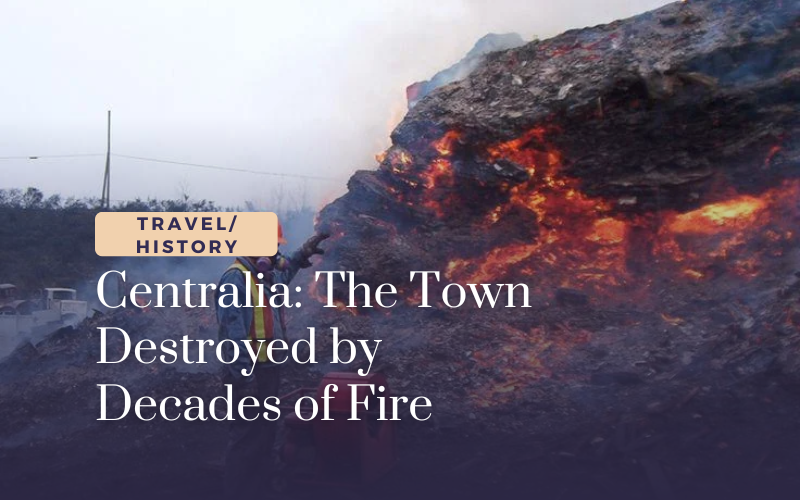This is one of my favorite stories, detailing the lost town of Centralia, Pennsylvania. Originally appearing on PROHBTD in 2018, the article was lost when the site shifted creative gears. I was fortunate enough to write a new version for Unilad in 2022. However, this original story is what allowed me to visit Centralia not long before one of its most iconic remaining elements was buried underground. While I encourage everyone to read the Unilad piece, this updated refresh of the 2018 original is a work of mine I’ll always point people toward. I hope you enjoy it.
Across the world, many once-bustling cities now sit as ghost towns, slowly consumed by nature. These formerly vibrant communities, often with thousands of residents, were once fueled by booming industries or major thoroughfares.
Over time, shifting markets and rerouted highways redirected their lifelines. From Route 66 in New Mexico to Drawbridge, a sinking ghost town near San Francisco to Kolmanskop, Namibia, each town succumbed to changing times. In rare cases, though, towns are destroyed by their own preventable actions.
A well-known example is the Chernobyl disaster in Pripyat, Ukraine in April 1986. In the U.S., Pennsylvania nearly faced a similar tragedy in 1979, when a meltdown at Three Mile Island led to the most significant nuclear power accident in U.S. history, forcing nearby citizens to evacuate for weeks. However, Three Mile Island wasn’t Pennsylvania’s first ecological disaster to put entire neighborhoods at risk. About an hour and a half northeast of the plant lies Centralia, a town abandoned due to an underground coal fire that burns to this day.
The Centralia Fire: How It Began & Grew

Centralia began mining coal in the early 1840s, nearly a century after European settlers took the land from indigenous Native Americans. The industry took off in the 1850s when a nearby railroad began transporting Centralia’s massive stockpile of anthracite coal. The town’s population peaked at over 2,700 near the turn of the century.
However, like many small towns, Centralia’s growth was stunted by the Great Depression and World War I. By the 1960s, mining continued at a diminished capacity and eventually ceased in the 1980s.
With the coal market declining in 1950, the borough took control of the land’s coal reserves. Ahead of Memorial Day festivities in 1962, Odd Fellows Cemetery led an effort to clean the nearby borough landfill. The landfill, built close to an abandoned coal mine, had unfilled holes left open in violation of prior agreements. A fire set to dispose of garbage in the landfill spread into one of these holes, igniting an exposed coal vein.
By Labor Day, the fire was nearly extinguished, but it reignited after a three-day holiday break. Further costly mistakes ensued, with state officials attempting to contain the fire by digging trenches—only for these efforts to drive the flames deeper underground. As costs mounted, the town turned to state and federal governments for help, only to be met with bureaucratic delays. Every pause for approvals saw previous firefighting efforts go up in smoke.
In the fire’s early years, most residents showed little concern for the blaze smoldering beneath them. But about seven years in, that began to change. Parts of the town started to crack as the fire edged closer to the surface. Smoke plumes rose from the streets, eventually inspiring the eerie aesthetic of the video game Silent Hill–though some argue that is the case.
Centralia’s Woes Worsen
In 1969, the first three homes were evacuated due to toxic gases. A decade later, John Coddington, a local gas station owner, noticed that his underground fuel tank temperatures were rising steadily. His business was quickly shut down and demolished, setting a precedent that would play out repeatedly in Centralia over the years.
Despite growing fears and pleas, government intervention remained minimal. Boreholes were drilled throughout town, and residents were advised to open windows to let out fumes. Many believe the uncapped boreholes only fueled the fire further, intensifying its burn.
It was Valentine’s Day 1981 when a critical turning point forced the government to act. That day, Todd Domboski narrowly escaped falling into a 150-foot sinkhole that suddenly opened under his feet, spewing hot steam and gas. Pulled to safety, Domboski attended a town meeting that day with a local Congressman in attendance. The sight of the boy sparked the federal government to relocate 27 families. This initiative divided the town, pitting residents who wanted to stay against those leaving.
Centralia: All But Gone

As health concerns mounted, Centralia became darkly known as “the hottest town in Pennsylvania.” Still, some residents clung to hopes for a resolution. In the early 1980s, the estimated cost to extinguish the fire was a staggering $660 million—nearly $1.5 billion when adjusted for inflation.
With no practical way to save the town, evacuees were moved to nearby trailer parks, often compensated at less than 70% of their pre-fire property values. Former Mayor Anna Marie Devine said in the documentary Centralia: Pennsylvania’s Lost Town, “It was easier and cheaper to move the people than to put out the fire.”
As of 2018, fewer than ten people remained in Centralia. By then, most of the roads were overtaken by nature, with some former residential roads now leading to dark forests, an image you might see in a dystopian horror film.
Despite being a ghost town, Centralia remained home to one of Pennsylvania’s most visited attractions, Graffiti Highway. The stretch of former highway PA-61 became a destination for tagging, ATV riding, and exploring the cracked, warped land of what was once a bustling community. The highway became famed for its eclectic, vibrant graffiti—some of it artistic, some of it simple tags. But, in 2020, it too was consumed by the Earth and demolished. Unlike the rest of town, this coverup was intended by officials.

When I visited the high on warm fall day in 2018, Graffiti Highway attracted a steady flow of visitors. ATV and dirt bike riders weaved through the crowds, using the asphalt’s cracks and swells as jumps. Couples bonded as they repainted the same sections of highway they’ve claimed over the years, re-tagging their mark.
Nature steadily reclaims Centralia as graffiti spills from the highway onto nearby roads. Navigating this landscape feels like a hike, where painted roads disappear under mud or slide away under rocks.
Venturing further from the highway reveals cleared land bordered by forest. Stone remnants of old foundations hint at where homes once stood, and the sound of the rerouted highway nearby adds to the surreal feel. Centralia’s broad, empty fields offer a striking reminder of nature’s beauty and the impact of human missteps.
Like its few remaining residents, Centralia is on the brink of extinction with no sign of coming back from its perilous state. Soon, the town and its surviving residents will be underground–but it didn’t have to be that way.
More Articles from Andrew Ward
Over his career, AWARD Founder Andrew Ward wrote over 1,000 articles for various publications. Unfortunately, many have gone offline or aren’t consistently available. And until they can be accessed regularly, we’ll occasionally publish some of our favorites right here on the AWARD blog. Click below to check out other articles by Andrew:




